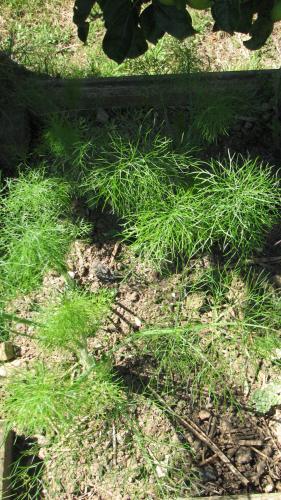Even though many gardeners assume growing fennel is difficult – it’s not as hard as you may think.
There are 2 types of fennel – the common fennel which is grow as a herb or the Florence fennel which is grow for the bulb. For this article I am writing about Florence fennel the bulbed variety.
Bulb Fennel is a very popular ingredient in Mediterranean cooking, and has become popular vegetable to grow.
Growing Fennel – Starting from Seed
You’ll find that if you decide to start growing fennel you will most likely have to start the seeds off yourself as it’s not a plant you will see for-sale in a garden centre. It’s best to sow the seeds direct into the soil because Fennel doesn’t like root disturbance. To direct sow the fennel seeds into the soil you can sow outside from late spring, after any threat of frost has passed.
You can also sow the fennel seeds in seed tray modules that have been filled with multi-purpose compost, watered and then sow an individual fennel seed in each module. You can sow from April like this but don’t forget you will need to harden off you plants before planting outside once there is no threat of frost – from early May on.
Growing Fennel – Soil Conditions
If you are growing fennel make sure you grow them in full sun. Fennel prefers the soil to be light and well-draining.
Before you sow the seeds you will need to dig the soil and add some well rotted manure or compost to the soil to give it extra nutrients. A couple of weeks before sowing rake the soil and make a fine tilth seedbed and apply a scattering of chicken pellets.
Make a drill in the soil about 1 to 2cm deep and sow the fennel seeds very thinly along the seed drill or place the individual seeds about 6” apart. Cover the seeds lightly and water the seed drill. The seeds will germinate within 7 to 14 days.
Growing Fennel – Instructions
The fennel plants need plenty of watering – they don’t want to dry out. You also need to keep them weed free, you can mulch around the plants to keep moisture in the soil and to help keep the weeds down.
The fennel bulb grows at the base of the leaves, but it doesn’t grow underground. As the fennel bulb starts to swell you will need to earth-up around the bulbs from around mid-summer until mid autumn as this will help blanch the fennel bulbs and will give you sweeter tasting fennel.
When growing fennel you will need to feed the plants with a high potassium fertiliser around every two weeks.
Growing Fennel – Pests and Diseases
Aphids – Sometimes you might find that some of the plants get an aphid attack, if you do you can spray the plants with soapy water will usually keep them under control.
Slugs – snails and slugs will attack young plants and can ea them completely in one night! Scatter slug pellets around the plant there are many natural slug pellets available.
Bolting – fennel can start bolting which means it starts to produce a flowerhead which makes the whole plant unusable. This caused by dry soil conditions or very hot weather.
Remedy: Ensure the soil or compost in pots is kept moist, especially during hot, dry spells. Using a temporary shade screen or sheets of shading material will help during very sunny weather. Keep the soil moist at all times.
Harvesting
The fennel bulb is harvested when it gets to the size of a small tennis ball. Any larger then that and the fennel plant will usually start bolting. The larger the fennel grows the more chance it has of becoming bitter. Cut the fennel bulb off at the soil level.
I hope this article encourages you to start growing fennel in your garden.









